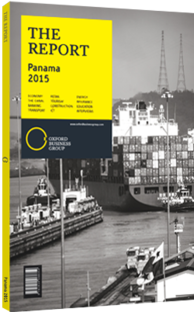Despite fiscal slippage Panama is on a firm footing
Panama is a small and open economy in which investment is normally well in excess of savings. In 2014 the current account deficit amounted to some $5.3bn, or 12% of GDP, according to the IMF.
Preliminary data indicates that the deficit of the non-financial public sector rose from just over $1bn in December 2013 to $1.9bn (or around 4% of GDP) in December 2014. The main reason for the deterioration in the public sector’s deficit was a rise in government spending by nearly 9% to $11.9bn. That increase was due to surges in the government’s wages bill (12.2%), purchases of other goods and services (16.7%), and payments on transfers ( subsidies and social problems – by 23.8%).
Legislative Changes
This fiscal slippage takes place in the context of several modifications to the key piece of legislation, the Social and Fiscal Responsibility Law (SFRL – Law No. 34 of 2008). This originally set a ceiling for the total deficit of the non-financial public sector at 3.7% of GDP.
According to Law No. 25 of 2014, the ceiling has been increased to 4.1% of GDP, while the maximum net debt ratio has been set at 40% of GDP. Net debt is equal to gross debt less the net assets of the sovereign wealth fund, Panama Savings Fund. The IMF’s Concluding Statement of the 2015 Article IV Mission noted, “The authorities should consider lowering the level and broadening the definition of the net debt target that is embedded in the SFRL. Indeed, exposures to shocks and contingent liabilities, large unfunded future pension liabilities, and the temporary financing needs of a liquidity facility to backstop the banks argue for larger fiscal buffers.”
According to the IMF, the government could make other changes to strengthen its fiscal position. One is to strengthen tax collection through the newly established Directorate General of Revenue, to reduce reliance on tax amnesties. Another is a phasing out of price controls food and fuel, taking advantage of lower global prices. The IMF suggested that the government’s “planned revision of energy subsidiaries is a positive step”. At the end of 2014 total government debt outstanding amounted to $18.23bn (or around 38% of GDP), a 16.2% increase compared to December 2013. The central government accounted for $18.09bn of this, while government agencies were responsible for the remainder. Slightly over half of the outstanding debt is accounted for by international bonds held by private sector creditors.
Steady Ratings
The fiscal slippage has not worried the major ratings agencies. In 2014 Moody’s, Standard & Poor’s, and Fitch rated the government of Panama at “Baa2”, “BBB” and “BBB”, respectively, with a stable outlook based on strong economic performance, macroeconomic stability and the Panama Canal’s important role in world trade.
The country’s current investment-grade sovereign ratings are similar to those of Colombia, one notch below those of Peru and Mexico and one notch above those of Brazil and Uruguay. The investors in the bonds have not been worried either. According to Bloomberg, over the course of 2014 yield spreads relative to US treasuries and credit default swaps generally moved in line with those of comparable bonds from Peru, Colombia and Mexico.
Over the three years to the end of 2014 the average interest rate paid by government on debt held by domestic investors rose from 3.95% to 4.75%, according to data from the Ministry of Economy and Finance (Ministerio de Economía y Finanzas, MEF). However, the average rate paid on debt held by foreign investors fell from 6.13% to 5.24%. Not only has the premium paid to foreigners fallen, but so too has the overall interest cost. Katyuska Correa de Jiménez, director of public credit at MEF, told OBG of various initiatives to promote the attractiveness of government bonds to investors. These initiatives include appointing market makers to boost liquidity, holding international roadshows and carrying out surveys of investors to better understand their needs.
You have reached the limit of premium articles you can view for free.
Choose from the options below to purchase print or digital editions of our Reports. You can also purchase a website subscription giving you unlimited access to all of our Reports online for 12 months.
If you have already purchased this Report or have a website subscription, please login to continue.

